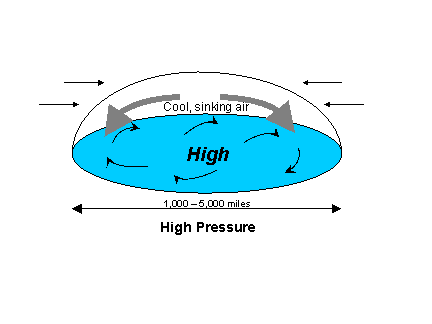Since surface air pressure is a measure of the weight of the atmosphere above any location,
a high pressure area represents a region where there is somewhat more atmosphere overlying it.
High pressure areas are usually caused by air masses being cooled, either from below (for instance, the subtropical high pressure zones
that form over relatively cool ocean waters to the west of Califormia, Africa, and South America), or from above
as infrared cooling of winter air masses over land exceeds the warming of those airmasses by sunlight.
As the airmass cools, it shrinks, allowing air from the surroundings to fill in above it, thus increasing thte total mass of atmosphere above the surface, which then results in higher surface barometric pressures.
The pressure difference between the high pressure area and its lower-pressure surroundings causes a wind to develop flowing from higher to lower pressure. But because of the rotation of the Earth, the wind is deflected to the right (in the Northern Hemisphere) which then causes the wind to flow in
a clockwise direction around the high pressure zone.
|



